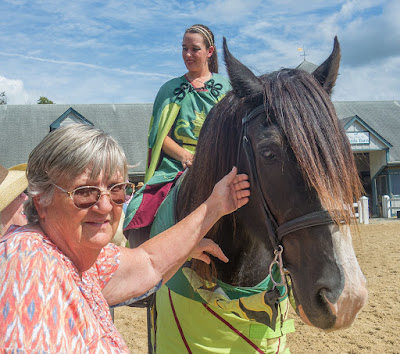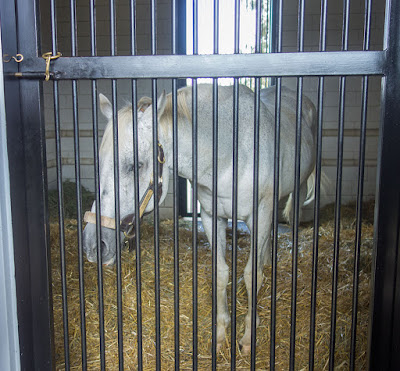On Saturday we stopped at a farmer's truck stand near where we were staying and bought a bag of beautifully ripe heirloom tomatoes. The complete meal consisted of a large plate of sliced tomatoes, provolone and mozzarella cheese, a yummy caramelized onion and balsamic vinegar dressing, a sprinkling of fresh basil, and fresh French bread. Perfect for a hot night!
To be honest, neither Craig nor I have really studied history beyond our required classwork in school and a few excellent programs on PBS and the History Chanel. But we have enjoyed hands on learning as we have visited many historic locations. When we were in Savannah last spring we got a small taste of what the Southerners thought of Lincoln. When we walked the battlefield and read the posters in a small museum in Gettysburg we learned more about the Civil War from the soldier's point of view, and we peeked into a replica of Lincoln's funeral train car.
We came to Springfield to learn more.
When looking for an RV park near Springfield Illinois, I discovered Lincoln's New Salem State Historic Site. It is a reconstruction of the former village of New Salem where Lincoln lived for several years as a young man. It is about 20 miles north of Springfield, and in addition to the wonderful village, it has an RV park. Off season, mid-week there were plenty of spaces available in the peaceful park. The $20 fee included an electric hook-up, but no water or sewer. Touring the village was free (donation optional).
There were numerous homes, barns, outbuildings, a school, shops and stores.
All were open and were furnished with items typical of the period. There were a few costumed volunteers around who were quite happy to talk about their characters' lives.
Lincoln tried his hand at a number of different professions in New Salem, including running a general store with a partner, but none worked out for him until he became a clerk for a lawyer, started to read the law, and became a lawyer. (Law schools were rare in the 1830s, and were not required.)
We stayed there two nights. On our arrival day we went to the Visitor Center in the late afternoon, and watched the movie and read the information on display. It was too hot to walk the village. But the next morning it was quite nice. The Village opens at 9 AM and we were able to see most of it before five bus loads of school children arrived! They were on their way in as we were on our way out.
Note for fellow RVers. If you don't want to stay at the park, there is parking for your rig in the bus lot. 1/2 day is enough time to see the village.
Friday morning we made the horribly long drive of 22 miles to the Illinois State Fair Campground. It is a parking lot, but close to the Lincoln sites, and gave us a level, full hook-up spot for $20 per night. In the afternoon we took care of necessary chores including doing the wash, a bit of grocery shopping, and a trip to Walmart to get tank-treatment chemicals.
Our first stop on Saturday was the Lincoln Home. When he bought it for $1500 it was only one story with one bedroom. Over the next twelve years it was remodeled and the second story was added.
It certainly was a big step up from the log homes in New Salem, and showed how prosperous he became as a lawyer.
The formal parlor was the site of many political meetings.
It is said that the Lincoln boys were quite unruly and spoiled. In this depiction of his Springfield Law Office, they are making a mess while their father reads on the couch!
From the house and his Law Offices, we walked a few blocks to the Abraham Lincoln Presidential Library and Museum.
Abe, Mary and three of their boys greet visitors outside the White House. The gray clad character in the background is John Wilkes Booth.
The excellent exhibits start with a full size replica of the log cabin Abe grew up in. The fire crackled and the dog snored.
In this diorama, Lincoln and Douglas debate.
Not much has changed in American politics. Because there were four candidates, Lincoln got only 29% of the popular vote, but it was enough.
The southern states seceded soon after his inauguration, and the Civil War began. It makes me wonder if it could happen again.
Now he is beloved, but at the time he was the brunt of vicious political cartoons. Many were on display with the equally derogatory words being spoken out loud overhead.
Some of the gowns worn by Mary Todd Lincoln and other women of status were replicated in this exhibit. She was snubbed by Washington society.
In this scene, Lincoln is discussing a draft of the Emancipation Proclamation with his cabinet members.
Every time we have the privilege of going to a place like this, I feel I learn so much about our past and gain some small increased understanding about our present.
I think he did the best he could.
We finished the day with a visit to the Lincoln Tomb in Oak Ridge Cemetery.
What would Lincoln say about our country today?






















































